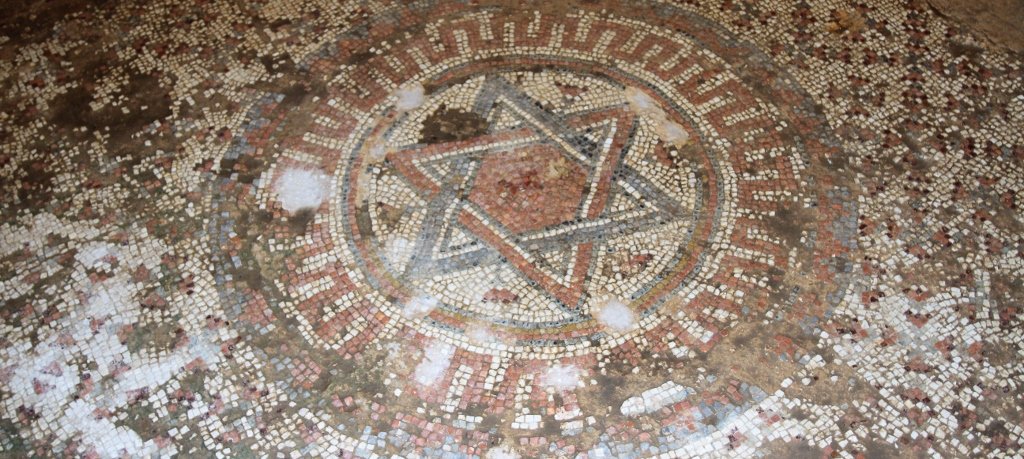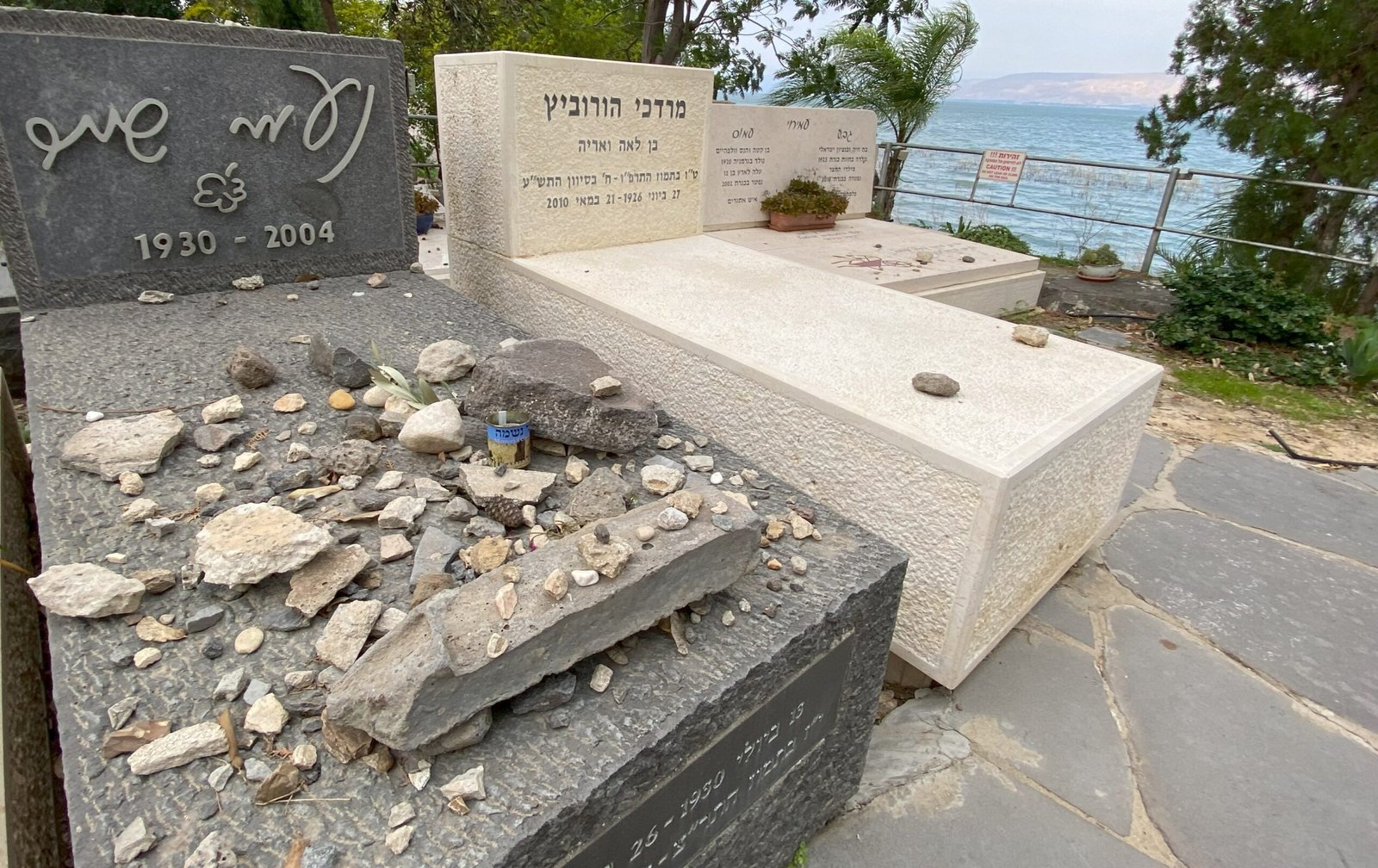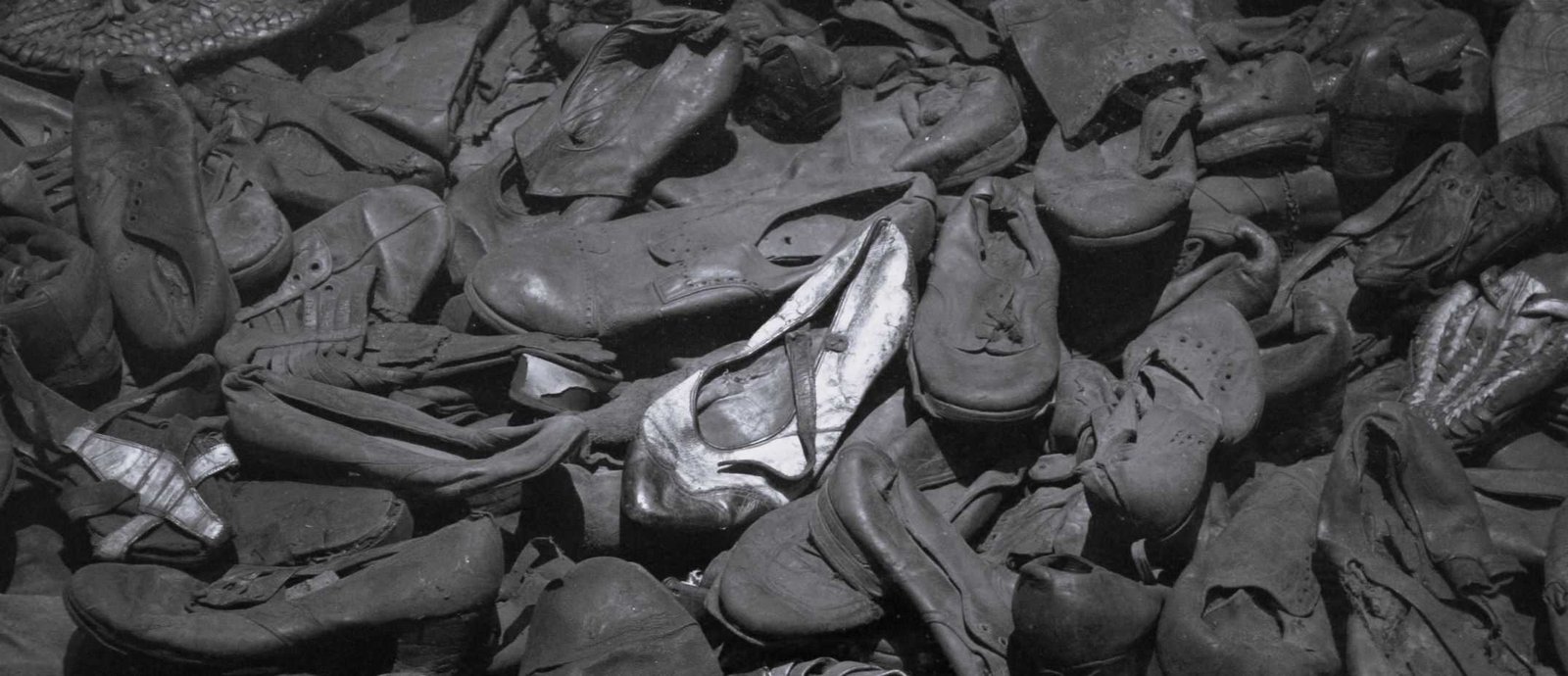Share This Story, Choose Your Platform!
Unlike the seven-armed candelabra which is the coat-of-arms of the State of Israel, the six-pronged star isn’t a biblical symbol. Only in the course of history has the so-called Star of David become a hallmark of Judaism. Originally it wasn’t, Jewish sources agree on that.
There were controversial discussions about the inclusion of the star on the flag of the State of Israel. Protocols of the temporary Council of the State of Israel, dated 28th October 1948, describe what the flag was to look like. The attention to detail revealed in these instructions is every bit as thorough as the biblical instructions about the design of the temple utensils, among them the “Menora”: “The flag of the State of Israel is 220 centimetres long and 160 centimetres wide. Its background colour is white, on it there are two sky-blue 25 centimetres-wide stripes spanning the whole length of the flag, positioned at 15 centimetres from the top edge and 15 centimetres from the bottom edge. Furthermore, at the same distance from both stripes is the Star of David, also on the white backdrop, formed using six sky-blue stripes, 5.5 centimetres wide, which make two triangles and the base of which runs parallel to the horizontal stripes.”
Professor Gershom Sholem, expert in the field of Jewish mysticism and co-founder of the Hebrew University in Jerusalem, has done extensive research on the Star of David symbol. Not long after the decision that the six-pronged star would appear on Israel’s national flag, he published an article. In it he wrote, “the Hexagram isn’t a Jewish symbol, and certainly not ‘the symbol of Judaism’”. This statement re-enforces the fact that Simon Philip de Vreis doesn’t give the Star of David a single mention in his book “Jewish Rites and Symbols”. The Dutch-Jewish scholar and Rabbi was murdered in 1944 in the Bergen-Belsen concentration camp.
Like the five-pronged star (the Pentagram), the six-pronged star – the Star of David or the Hexagram, has been used as a decoration in many parts of the world, whether in Peru, Egypt, China or Japan. As a decorative ornament on a Jewish object, this symbol was detected for the first time on a seal belonging to Joshua Ben Assayahu around the year 600 before Christ. In the second or third century after Christ the Hexagram then appears on a frieze in the Capernaum synagogue, next to pomegranates and grapes. In Christian churches too, the six ragged star was used as an ornament. A wonderful example of this is a marble 13th-century Bishop’s throne in the Cathedral of Anagni in Italy.
Widely differing groups have attributed to the Pentagram and the Hexagram mystical or even magic powers. “In this area there has always been a strong interaction between Jews and non-Jews, because there is nothing more international than magic. Magic signs and figures wander from one people to the next”, writes Gershom Sholem. In another study with the title “Jewish Magic and Superstition”, Joshua Trachtenberg quotes the Jewish composer Karl Goldmark: “Civilized people lose their religion quickly, but seldom lose their superstition.” Trachtenberg writes that the Pythagoreans already attributed strong mystical powers to the six- and five-pronged star. They were discovered on Hindu talismans. Later they appeared on Arab bracelets and sorcerous Christian texts from the Middle Ages. The Alchemists too made enthusiastic use of the symbol. One triangle symbolized water, the other fire.
In Arab sources, both stars appeared together with other oriental ornaments under the term “the Seal of Solomon”. This probably has some connection with an ancient legend about Solomon’s dominion over the spirits. In this legend, a signet ring is mentioned, on which the name of God – and not a magic sign – was originally engraved. The power of this ring is described in a pseudepigraph written in Greek, the law of Solomon, which Professor Sholem identifies as Jewish-Christian magic. Whether the name “the Seal of Solomon” originally came from Jews or Christians, from whom the Arabs then took it over, can no longer be determined.
The expression “the Shield of David”, in Hebrew “Magen David”, exists in old Jewish handwritten documents, but without any connection with a geometric sign. The legendary virtues of King David’s shield are described in the explanation of a secret star script – most particularly in connection with a letter which looks like a “V” with a ring at each end. From the 13th century onward, the name “Shield of David” was then used instead of “Seal of Solomon” for the Hexagram in Jewish scripts written by the cabbalists and in collections of magic laws and amulets which are supposed to protect you against evil looks, evil spirits, the sword and imprisonment.
In the middle of the star’s triangles you could often find the name of God, accompanied by names of angels. Serving as additional protection, these signs with angels’ names were written at the edges of mezuzot texts. The Jewish scholar Maimonides is against the inclusion of writings and pictures in the text itself. He criticizes the common practice of making charms out of the proclamation of the name of God. In Christian society the five ragged star served in Germany as a so-called druid foot, a magic symbol. It was supposed to give protection at stable doors and babies’ cribs.
On the amulets of the Rabbi Jonathan Eibenschütz from Hamburg, the only symbol you can find is the six ragged star, in the middle of which stands the word “Seal”, or “Seal of the God of Israel”, or “Seal MBD”. His critics interpreted the abbreviation as meaning “Seal of Messiah Ben David” and accused him of being a disciple of Zvi Shabtai from Smyrna, who was an extremely controversial messianic figure in the Judaism of the 17th century. That’s how the Hexagram got its messianic significance.
The star played a special role in the history of Bohemian Judaism. In the year 1357, Emperor Charles IV bestowed on the Jews in Prague the privilege of having their own banner. He possibly even donated the banner to them himself – on it was the symbol of the Star of David. After that, it is claimed that the Jews in Prague used this banner as a symbol of the Jewish community and greeted their rulers with it at the gates of the ghetto whenever they visited Prague. They were immediate subjects of the ruler, were only allowed to live in certain parts of the city, and in the course of history were again and again driven away from Prague and other parts of Bohemia. A merciful concession of Emperor Rudolph II to the Jew Mordechai Meisel dating from the year 1598 has been preserved, permitting him to display a duplicate of this Jewish banner in the New Synagogue.
The Star of David is pictured on one of the oldest Jewish books which was printed in Prague in 1512. In another book, printed in Prague in 1540, a Cherubinian is holding the Shield of David. A Hexagram together with a goose (“Ganz”) can be found of the gravestone of the Jewish Prague scholar David Gans. He published a book with the title “the Shield of David” just before his death in 1612. From about the year 1600, the sign appeared on seals belonging to Jewish associations and private persons, and in synagogues. On the tower of the Jewish town hall in Prague there is a Star of David with a hat in the middle. According to tradition this is supposed to be a Swedish hat, in commemoration of the aid which the Prague Jews contributed in the Thirty Years War in the defence of Prague against the Swedes.
Beginning in Prague, the star spread as a symbol of Jewish communities to other parts of Europe. In Vienna a boundary stone between the Jewish and the Christian districts has been preserved, on which for the first time both symbols – the cross and the Star of David – can be seen opposite each other. On a coloured engraving of the interior of the Old-New-Synagogue in Prague, which Vilem Kandler created in about the year 1840, a five-pronged star can be seen on the Jewish flag. The term “Shield of David” for the six-pronged star obviously didn’t become consolidated until the 19th century. Gershom Sholem writes: “In the very days of its widest propagation in the 19th century, the Shield of David served as a meaningless symbol of Judaism which itself was yielding more and more to the spirit of meaninglessness.”
In 1897, the Zionist movement included the Shield of David on its flag, the background of which was the Jewish prayer shawl. There is a widespread meaning that the Zionists apparently liked about the Hexagram that it was a symbol of Judaism free of any religious connotations. This assumption is, however, contradicted by their decision to use the prayer shawl of all things as a pattern for the flag. Moreover, the Star of David definitely did play a role in folk religion, albeit more in the sense of superstition than faith. It seems to be a general human trait to look to the magic properties of David’s shield rather than to the power of God which, according to the testimony of the Bible, revealed itself in the life of David. But the Shield of David has more than once disappointed Jewish people who imagined themselves to be under special protection after claiming its virtues.
During the darkest chapter of their history, the Jews who Hitler considered destined for extermination were labeled with the six-pronged star. Poland, which in 1939 was the first country to be occupied by the German army, served as a test case. On the 18th October 1939, an edict was passed in Krakow which ordered every Jew from twelve years and older to wear a visible sign. A Jew was “anyone who belongs or has ever belonged to the Mosaic faith community, whose father or mother belongs or has belonged to the Mosaic faith community.” A white band with a blue Zionist star on it served as a sign. The Jewish Council was made responsible for the production and distribution of the bands. On the 1st September 1941 a police issue followed, ordered by Reinhard Heydrich. It stipulated that Jewish children as young a six years old were to wear a yellow six ragged star with black edges, in the middle of which the word “Jude” was written in black. Some of the entrances to ghettos were also marked with Stars of David.
But it was this very path of suffering which reconciled Professor Gershom Sholem with the original magic symbol. Thus, at the end of his treatise he writes, “the sign which has been sanctified in our own days through suffering and atrocity, has become worthy of illuminating the path to life and development. Before the rise came the road into the abyss, and at the very place in which the symbol underwent its final humiliation, it achieved its greatness.”






















